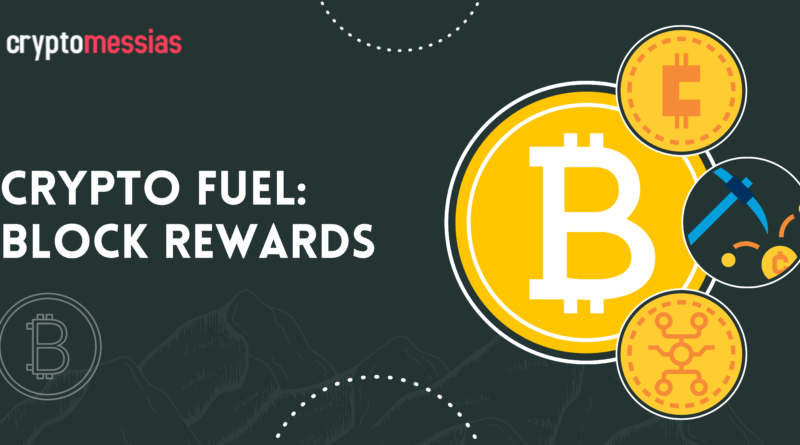The Fuel for the Crypto Currency Engine: Block Rewards
In the intricate world of cryptocurrency, miners play a vital role in verifying transactions and securing the network. But what motivates them to dedicate their computational power? Enter the concept of block rewards – the digital gold that keeps the crypto engine humming. This blog delves into the core of block rewards, exploring how they incentivize miners, contribute to network security, and even influence cryptocurrency prices.
The Anatomy of a Block Reward:
Imagine a giant, decentralized ledger – that’s essentially what a blockchain is. Transactions are bundled together into blocks, and miners compete to solve complex mathematical problems to validate these blocks. The first miner to crack the code gets rewarded with a block reward, which consists of two key components:
- Newly Minted Cryptocurrency: This is the exciting part – a portion of the block reward comprises freshly minted coins specific to the blockchain in question. In Bitcoin’s case, this reward is currently 6.25 Bitcoins (as of April 2024), and it’s programmed to decrease by half in every halving event (more on that later).
- Transaction Fees: Users pay fees for faster transaction processing. The block reward also includes these fees, incentivizing miners to prioritize blocks with higher fees.
Fueling the Network: Why Block Rewards Matter
Block rewards serve a critical purpose in the cryptocurrency ecosystem:
- Incentivize Mining: Mining requires significant computing power and electricity. Block rewards compensate miners for their time, resources, and the valuable service they provide in securing the network. Without these rewards, there would be little motivation to participate in the mining process.
- Network Security: The competition for block rewards creates a secure environment. Miners are competing to add valid blocks to the blockchain. Any attempt to tamper with the blockchain would require immense computing power to control a majority of the mining network – a very expensive and near-impossible feat.
- Decentralization: Block rewards ensure that the network remains decentralized. There’s no central authority controlling the issuance of new coins; it’s a function of the network itself. This encourages trust and transparency within the cryptocurrency ecosystem.
The Evolving Landscape of Block Rewards:
Block rewards are not static. Some key factors to consider are mentioned below:
- Halving: As mentioned earlier, for certain cryptocurrencies like Bitcoin, the block reward is programmed to decrease by half periodically. This mechanism helps control the total supply of coins, mimicking scarcity in precious metals and potentially influencing their value.
- Proof-of-Stake vs. Proof-of-Work: Different blockchains employ different consensus mechanisms for transaction validation. Proof-of-work (PoW) blockchains, like Bitcoin, rely on mining and block rewards. Proof-of-stake (PoS) blockchains use a different approach, where validators lock up their cryptocurrency as a stake to participate in the validation process. Rewards in PoS systems are typically distributed proportionally to the amount staked.
- Transaction Fees: As cryptocurrency adoption grows, transaction volume might increase. This can lead to higher transaction fees, which become a more significant portion of the block reward, potentially making mining even more lucrative.
Beyond Security: The Block Reward’s Impact
The influence of block rewards extends beyond network security:
- Price Speculation: Block rewards, particularly the concept of halving in PoW blockchains, can lead to price speculation. As the supply of newly minted coins dwindles, some investors believe the value of existing coins will rise due to increased scarcity.
- Sustainability Concerns: The energy consumption associated with PoW mining has raised concerns about sustainability. Some argue that transitioning to PoS models with lower energy requirements could be a more environmentally friendly approach.
The Future of Block Rewards: A Dynamic Force
Block rewards are a fundamental element of cryptocurrency networks. As the crypto landscape continues evolving, we expect to see further innovations in consensus mechanisms and reward structures. However, the core principle of incentivizing network participants to secure and validate transactions will likely remain a cornerstone of the blockchain revolution.
The Final Takeaway: Understanding Block Rewards
Understanding block rewards is crucial for anyone interested in the world of cryptocurrency. They are the fuel that keeps the network running, incentivizes miners, and contributes to a secure and decentralized ecosystem. By delving deeper into the mechanics and implications of block rewards, you gain valuable insights into the intricate workings of the crypto market.

